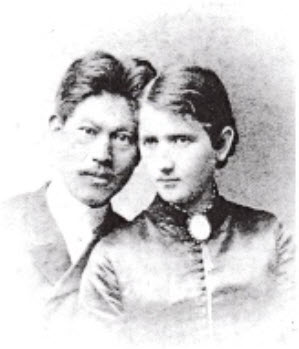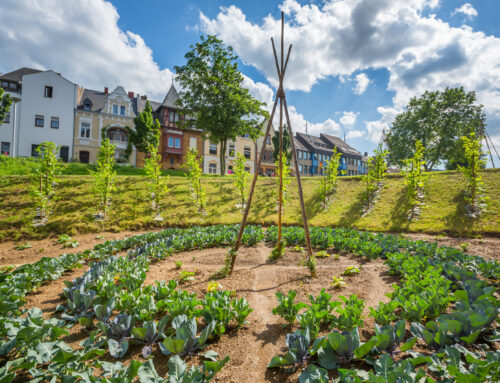
Our small but beautiful Andernach has much more to offer than you might think.
Perhaps Charles Bukowski comes to mind first as an Andernach celebrity, but there is also a very special woman: Therese Nagai-Schumacher (1863 – 1924), born Therese Schumacher and daughter of a wealthy coal and building materials merchant in Kölner Straße in Andernach, directly on the Rhine.
Her intercultural love affair with the Japanese chemist and pharmacologist Nagayoshi “Wilhelm” Nagai was a milestone in terms of international understanding.
Some basics about Nagayoshi Nagai
Nagai (1845 – 1929) was the first Japanese student to be sent to Germany by the government for study purposes. Out of great admiration for his host country, he later also called himself “Wilhelm”.
After completing his chemistry studies in Berlin in 1883, he met Therese, 18 years his junior, on a trip to the Rhine – it was love at first sight for both of them. For Nagai, it was not her social status and wealth that were decisive, but her extraordinarily clever mind.
Back in Japan, he succeeded in 1885 in isolating ephedrine, the basic substance of an asthma and cough remedy. In 1893, he synthesized metamphetamine from ephedrine.
An extraordinary liaison
Their mutual longing was so overwhelming that he traveled back to Germany in 1886 to marry Therese, who then followed him to Japan. Their wedding took place in St. Mary’s Cathedral in Andernach. The wonderful bronze chandelier that adorns the cathedral was donated by the couple’s grandson.
His devotion to Therese was so great that he even converted to Catholicism 13 years later.
Therese’s work and her influence on Japanese society
Despite homesickness, Therese quickly gained a foothold in faraway Nippon. In addition to her role as a mother-of-three, she taught German, home economics and knowledge about life in Western society at schools in Tokyo and was appointed professor of German in 1901! She was also mother-of-three to Alexander, Elsa and Willy. The names reveal the perfect German-Japanese symbiosis that prevailed in the Nagai household.
The couple founded the first Japanese women’s university in 1901 and ensured that the chemistry students were provided with state-of-the-art laboratory equipment – which came from Germany!
German-Japanese friendship
Throughout their lives, the couple worked to expand the friendship between Germany and Japan, including hosting Albert Einstein and his wife in 1922 – Therese interpreted, of course. Einstein’s mission at the time was to obtain the lifting of the economic boycott imposed on Germany after the First World War.
When Therese died at the age of 61, she was buried in a beautiful location overlooking the sea with a view of Mount Fujiyama. There, too, the memory of a special woman is honored in an unusual way: a relief image of Andernach Cathedral and an almost life-size statue of the Virgin Mary adorn her grave monument.
What a great ambassador Therese Schumacher was for Andernach and Germany, especially in these times!
Andernach and the natural sciences seem to be a particularly good match: LTS has had its headquarters in Andernach, the second oldest town in Germany, for meanwhile more than 30 years.
WE Care.





